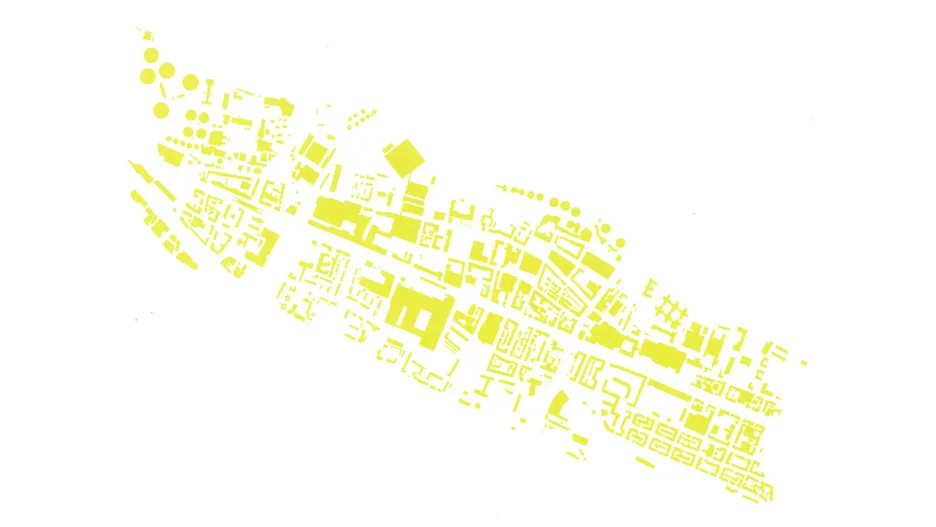City Lab Nuremberg West

Project duration
2013
Funding organization
City of Nuremberg (Nürnberg)
Department of economic affairs
Housing and Urban Development Division
Project partners
Chair of Sustainable Urbanism
Chair of Urban Development
Specialist department of Urban Structure and Transport Planning
Chair of Landscape Architecture and Public Space
Chair of Energy Economy and Application Technology
Summary
Nuremberg West has excellent locational and development potential and is well suited for the development of a viable and liveable city both from an economic and social perspective. However, there are many obstacles to unlocking its development potential, and these can only be overcome by applying a goal-driven and coordinated approach in urban planning, urban development, process organization and actor management. In contrast to conventional planning practice, the City Lab Nuremberg West addresses the much needed transformation by developing long-term schemes and assessment methods that characterize the selection of today’s activities: Based on a detailed analysis of the baseline situation, three positive future scenarios for Nuremberg West in 2050 are anticipated to help identify and carry out model tests of tailor-made transformation measures in specific sub-spaces.
The necessary changes in energy demand and supply structures provide starting points that must be leveraged at the right time. The future concepts, subspace studies and energy scenarios lead to the clear finding that urban planning urgently requires a definition of overarching objectives and specific corresponding strategies for implementing them. Urban development must anticipate global trends and initiate adequate action. “Business as usual” is not enough and leads to adaptation, thus subjecting further developments to unexpected dynamics. In the future, it will be necessary for the city to enhance and improve management activities that open up long-term perspectives based on a targeted land policy with strategic land acquisition, thus increasing its strategic scope for action. Time losses may have negative consequences for the opportunities currently offered by Nuremberg West. The specific urban development concepts developed in the subspace studies resulted in the identification of key projects in strategic locations that exemplify a sustainable city of the future with the objective of stimulating civil involvement in the transformation process. To reach this objective, it is necessary to enhance citizen identification with the urban district. This can be achieved, for instance, through urban development activities adding value to the quarter characterized by its industrial past, thereby increasing the attractiveness of the site in the context of the whole city in the long term. The residential standards have to be improved to appeal to broad sections of the population, thereby attaining a social mix that suffices to promote integration into neighbouring quarters. The mix and density of uses should be supported and enhanced, thereby developing major locations as centralities in Nuremberg West. Strategic programming of temporary uses and uses for small businesses contributes to the attractiveness as a company location while at the same time sustainably managing the available resources.
The quality of stay in the open spaces and streets should be improved while simultaneously creating new green spaces and integrating the green/recreation spaces on the banks of the Pegnitz River. Improving the links between open spaces and reducing the numerous barriers that exist are essential to achieve these objectives. Possibilities to improve the urban climate arise from the simultaneous integration of new planting and management concepts that have a positive impact, for example, on cooling urban spaces and surface water management, while simultaneously improving the quality of the surrounding space and the interconnections in the district. In any event, it is necessary to remove the numerous barriers and create a new, excellent network of foot and bike paths. The barrier effect of Fürtherstraße is an issue that particularly demands long-term solutions. Local mobility concepts should generally be upgraded while creating high-quality space for new, resource-efficient forms of mobility. There are many starting points for sustainable use of resources in Nuremberg West. Energy efficiency must be drastically improved to meet the targets of the Federal Government's energy concept and the requisite transformation of the energy system. Long-term retrofit strategies for buildings and infrastructure must be initiated promptly and can have a positive influence on the transformation process. The City of Nuremberg should take on a leading role by launching own real estate development projects and acting as an advocate for the transformation into a sustainable and livable city.